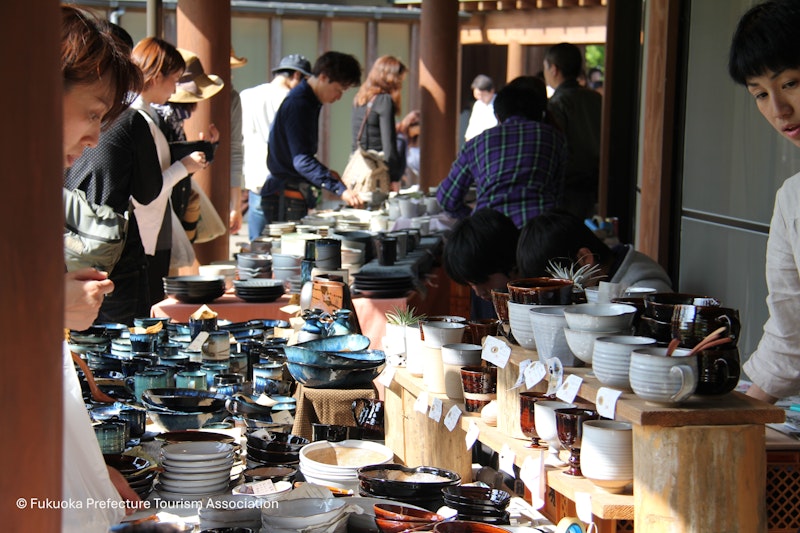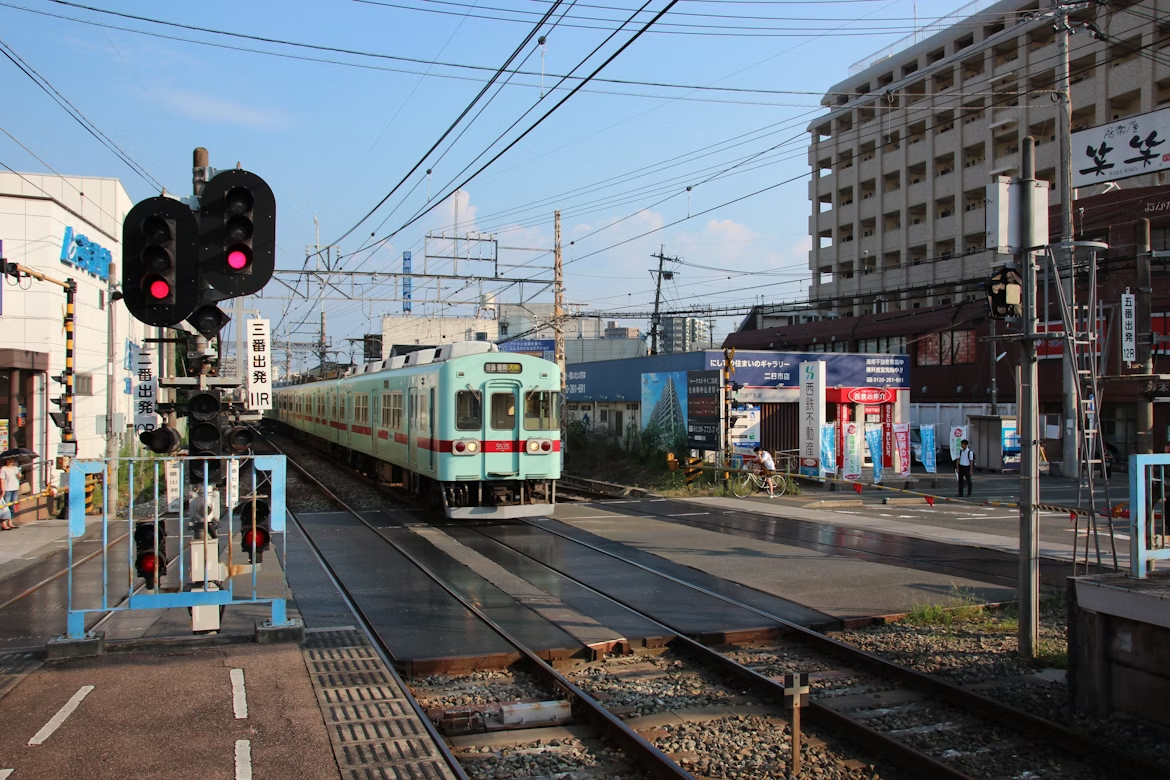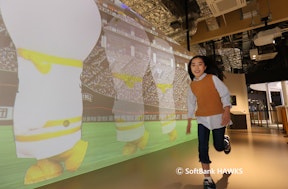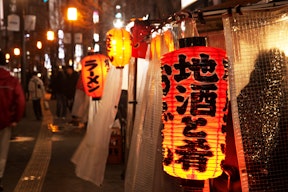15 Recommended Souvenirs from Kyushu | Including Places Where You Can Buy Souvenirs
Nov 26,2025 Update
Many people may have experienced confusion about which souvenirs to buy when traveling to Kyushu. Whether it's gifts for family, colleagues, or friends, or a special item to bring back memories of the trip for yourself, you want to choose something meaningful. What you need to know in such situations is information about souvenirs unique to Kyushu, including famous confections, crafts, and distinctive gourmet items.
This article introduces 15 recommended popular souvenirs from Kyushu along with places where you can purchase them. From among the various attractive items packed with charm, let's find the perfect Kyushu souvenir.
Table of Contents
1. 15 Recommended Souvenirs from Kyushu
1-1. Menbei
1-2. Hakata Torimon
1-3. Karukan
1-4. Famous Confection Tsurunoko
1-5. Umegae Mochi
1-6. Tirolian
1-7. Satsuma Imo Tart
1-8. Manhattan
1-9. Doraking Ace
1-10. Karashi Mentaiko
1-11. Umakacchan
1-12. Hakata Motsunabe
1-13. Kyushu Shochu
1-14. Karatsu-yaki
1-15. Arita-yaki
2. Places to Buy Souvenirs in Kyushu
2-1. Canal City Hakata
2-2. JR Hakata City (AMU Plaza Hakata)
2-3. Tenjin Underground Shopping Center
2-4. Kamitori-Shimotori Shopping Streets
2-5. Kurosaki Shopping Street
2-6. Fukuoka Airport
Summary
1. 15 Recommended Souvenirs from Kyushu

Kyushu has many souvenirs packed with unique local charm. Here, we carefully select items perfect for travel memories and gifts, from classic famous confections to unique gourmet foods and traditional crafts.
1-1. Menbei
Menbei is a mentaiko-flavored rice cracker produced by Fukutaro, a long-established company in Fukuoka. It's beloved not only by locals but throughout the nation as a classic Fukuoka souvenir. Since its debut in 2001, it has grown into a huge hit product with annual sales exceeding 3 billion yen.
Its greatest appeal lies in the exquisite balance of crispy, light texture with the umami of seafood including mentaiko and just the right amount of spiciness. Starting with the classic "Plain", varieties include "Mayonnaise flavor", "Green onion", "Onion", "Spicy", "Katsu Menbei (bonito flavor)", and "Aromatic shrimp", along with many limited editions and collaboration products, with over 60 varieties currently available.
1-2. Hakata Torimon
Hakata Torimon is the most popular Western-style Japanese confection produced by Meigetsudo, a long-established confectionery shop in Hakata, Fukuoka. It was named after the Torimon, people who parade through the streets playing shamisen and drums during Hakata's festival Hakata Dontaku.
This delicacy uses high-quality white bean paste wrapped in a skin with a subtle milk aroma, featuring a melt-in-your-mouth texture and elegant sweetness. By aging the white bean paste and dough for a certain period before baking, it achieves a perfectly blended, moist texture. Currently sold mainly in the Fukuoka City area, it's truly a masterpiece where you can taste "the heart of Hakata".
1-3. Karukan
Karukan is a traditional Japanese confection representing Kagoshima, steamed using jinenjo (Japanese yam), karukan flour (a type of rice flour), and water as main ingredients. While there are various theories about its origin, the most credible suggests it was created by confectioner Yashima Rokubei from Akashi under orders from Shimazu Nariakira, the lord of Satsuma Domain, during the late Edo period.
Characterized by its fluffy texture and pure white appearance, the popular Karukan Manju with bean paste filling has gained popularity in recent years. During autumn and winter, when jinenjo is in season, more aromatic and rich-flavored Karukan becomes available and is treasured as a gift item.
1-4. Famous Confection Tsurunoko
Famous Confection Tsurunoko is Ishimura Bansendo's representative Hakata confection that has been beloved for over 100 years. The background of its creation lies in the idea of utilizing the large amount of egg whites left over from producing Keiran Somen (egg noodles) that the shop was manufacturing. Founder Ishimura Zentaro whipped egg whites and stuffed them into eggshells along with bean paste, creating the prototype of Tsurunoko.
The product name Tsurunoko derives from its cute appearance resembling crane eggs. The fluffy dough wraps mild yellow bean paste, spreading gentle sweetness and subtle egg aroma throughout the mouth. This famous confection, born from Hakata's climate and the craftsman's ingenuity, continues to be cherished by many people, centered around Ishimura Bansendo Main Store.
1-5. Umegae Mochi
Umegae Mochi is a simple Japanese confection known as a specialty of Dazaifu, Fukuoka Prefecture. While one might imagine plum flavor, it actually doesn't contain plums, and its name originates from the Heian period legend of Umegae Mochi. According to the story, an elderly woman offered mochi skewered on a plum branch to the exiled Sugawara no Michizane.
Umegae Mochi is characterized by dough made from a blend of glutinous rice and regular rice wrapped around chunky sweet bean paste and grilled until fragrant. Over 30 shops line the approach to Dazaifu Tenmangu Shrine, where the fragrance of freshly grilled mochi is exceptional. When taken home, you can enjoy a moist texture, making it perfect both for eating while walking and as a souvenir from Dazaifu.
1-6. Tirolian
Tirolian is a Western-style confection in roll cookie form launched in 1962 by Chidori Manju Sohonpo, a long-established confectionery shop in Fukuoka. Various versions are available, including Tirolian Long popular as gifts, flat-baked Tirolian Hat, and easy-to-eat Tirolian Short.
Tirolian's appeal lies in its crispy, light dough baked with fresh milk and butter, filled with smooth original cream. The basic cream flavors are vanilla, coffee, strawberry, and chocolate, with many seasonal and regional limited flavors also available. Sold at numerous stores mainly within Fukuoka Prefecture, it's Chidoriya's masterpiece beloved by children and adults alike for many years.
1-7. Satsuma Imo Tart
Satsuma Imo Tart is a Western-style tart confection made by processing sweet potatoes from Kagoshima Prefecture into sweet potato paste, piping it onto cookie dough, and baking. The manufacturer Yamafuku Seika is a long-established company that has been developing souvenir confections using Kagoshima sweet potatoes as the main ingredient for over 30 years, creating products that combine traditional techniques with innovative ideas.
Satsuma Imo Tart is characterized by gentle sweetness and moist texture, using carefully selected local Kagoshima ingredients like Beni Satsuma to maximize the natural flavor of the ingredients. The flavor, created with the thought that "if the famous lord of the late Edo period, Shimazu Nariakira, had tasted it, he surely would have been satisfied", is a delicacy packed with Kagoshima's climate, history, and simple sweetness.
1-8. Manhattan
Manhattan is a long-selling product launched by Ryoyu Pan, a bakery company in Fukuoka Prefecture, widely beloved as a local bread representing Kyushu. The name's origin comes from the development staff referencing a product they saw in Manhattan, New York. By chance discovering a "crispy texture" and applying it to donuts, a completely new flavor was born.
The appeal lies in the hard donut dough with a crispy texture, generously coated with chocolate. Since its 1974 launch, it gained popularity mainly among students and was sometimes called the "phantom bread" because it sold out quickly at school shops. It remains a soul food of Kyushu with a devoted fanbase to this day.
1-9. Doraking Ace
(Source: ito-king)
Doraking Ace is an evolved dorayaki (pancake sandwich) using Amaou strawberries from Fukuoka Prefecture, created by Amaou Strawberry Processing and Sales Shop Ito King with its main store in Itoshima City, Fukuoka Prefecture. Since its 2012 launch, this popular product has sold over 200,000 units annually and was developed to surpass the taste of the previous Amaou Single Strawberry Dorayaki.
The characteristic feature is that instead of using Amaou strawberries as-is, they're processed into strawberry mousse and carefully wrapped with pure fresh cream and smooth sweet bean paste in thin, chewy dough. One bite reveals the gentle sweetness of strawberries and the richness of sweet bean paste in an exquisite flavor balance. It can be frozen for storage, and by moving it to the refrigerator a few hours before eating, you can enjoy its melting deliciousness.
1-10. Karashi Mentaiko
Karashi Mentaiko is defined as "pollock roe (including eggs) marinated in seasoning liquid flavored with chili peppers" and is a Fukuoka specialty. Its roots trace back to the 17th century Korean Peninsula, and it was introduced to Japan in the early Showa period, becoming sold mainly by fish shops in Fukuoka, Kitakyushu, and Shimonoseki, areas with active Korean exchange.
It became a Hakata specialty thanks to Kawahara Toshio (founder of Fukuya), who returned from Korea after the war and commercialized Karashi Mentaiko adapted to Japanese tastes based on what he had eaten in Korea. Sales began in Nakasu in 1949, and the taste became a topic of conversation. With the Sanyo Shinkansen's extension to Hakata in 1975, it became a nationwide souvenir.
1-11. Umakacchan
Umakacchan is a long-selling product by House Foods, developed as instant ramen that allows you to easily enjoy the taste of tonkotsu ramen, Fukuoka Prefecture's representative soul food, at home. Since its 1979 launch, it has gained overwhelming support in the Kyushu region and celebrated its 45th anniversary in 2024.
It faithfully reproduces the distinctive aroma and taste of tonkotsu soup, characterized by mild, deep-flavored soup with effective pork flavor. In addition to the standard Umakacchan that has maintained its original taste since launch, it offers diverse flavor variations adapted to regional preferences, including Kumamoto-style, Hakata-style, and Kagoshima-style. It has now become a representative local instant ramen with a devoted fanbase mainly in Western Japan.
1-12. Hakata Motsunabe
Hakata Motsunabe is a local cuisine representing Fukuoka and Hakata, a stamina-rich hot pot dish where beef offal is simmered with Chinese chives, cabbage, and other vegetables. Its roots are said to originate from people from the Korean Peninsula who worked in coal mines, who used to simmer offal and vegetables together.
The appeal of motsunabe lies in the chewy texture of the offal, rich soup, and excellent compatibility with vegetables. Famous Fukuoka restaurants like Rakutenchi, Hanamidori, Ichifuji, and Yamaya also sell take-home and souvenir sets that can be stored at room temperature, allowing you to enjoy authentic Hakata flavors at home.
1-13. Kyushu Shochu
Kyushu Shochu is a general term for authentic shochu made throughout Kyushu, utilizing the rich nature and climate of each region, with different agricultural products and production methods creating regional characteristics. The types, aromas, and flavors of shochu vary greatly depending on ingredients, koji, yeast, and distillation methods, allowing you to enjoy tastes that reflect each region's individuality.
Barley shochu originated in Iki, Nagasaki Prefecture, with fragrant and mild sweetness. Iichiko from Oita Prefecture is popular worldwide. Sweet potato shochu is a Kagoshima specialty, with Aka Kirishima and Jinko from Fukuoka Prefecture being well-known. Rice shochu is represented by Kuma Shochu from the Kuma region of Kumamoto. Additionally, there's Amami Islands-exclusive brown sugar shochu and buckwheat shochu from Takachiho, Miyazaki Prefecture. Kyushu is truly a treasure trove of shochu, so choosing them as travel souvenirs allows you to enjoy regional flavors.
1-14. Karatsu-yaki
Karatsu-yaki is traditional pottery fired mainly in Karatsu City, Saga Prefecture, and is one of Japan's leading ancient kilns. While there are various theories about its origin, it began in the Hata clan's territory in the 1580s, and when Korean potters were brought back during Toyotomi Hideyoshi's Korean campaigns, their techniques greatly advanced both quality and production volume.
After the Meiji period, it temporarily declined, but gained attention again through Nakazato Muan's revival of ancient Karatsu techniques, and currently over 70 kilns continue their activities. Karatsu-yaki is characterized by rough clay texture and simple charm, and as pottery that values "beauty of use," it's beloved not only for tea ceremony utensils but also as tableware and sake vessels.
1-15. Arita-yaki
Arita-yaki is Japan's oldest porcelain manufactured in Arita Town, Saga Prefecture and surrounding areas, a traditional craft boasting over 400 years of history. Its origin dates to 1616, when potter Ri Sampei, who came during the Korean campaigns, discovered porcelain stone at Izumiyama and fired Japan's first porcelain. During the Edo period, it was called Imari-yaki or Hizen-yaki, and because it was exported from Imari Port, it received high praise in Europe under the name "IMARI".
Arita-yaki features diverse techniques including sometsuke (blue and white), iro-e (overglaze enamels), and hakuji (white porcelain), characterized by delicate designs like paintings and gorgeous coloring. The three major styles - Ko-Imari style, Kakiemon style, and Nabeshima style - each embody different aesthetic sensibilities. In recent years, many works feature refined designs that harmonize with contemporary lifestyles while maintaining their inherent beauty.
2. Places to Buy Souvenirs in Kyushu
(Source: Fukuoka Tourism Concierge "Omiyage Honpo Hakata" Referenced on 2025/6/11)
From here, we'll introduce popular shopping spots convenient for souvenir selection during Kyushu travel. Let's find specialty products from various Kyushu regions at easily accessible areas including airports, commercial facilities, tourist areas, and local shopping streets.
2-1. Canal City Hakata
Canal City Hakata is located in central Fukuoka City with excellent access, within walking distance from Hakata Station, Nakasu Yatai Street, and Tenjin. It's about a 3-minute walk from Kushida Shrine-mae Station on the subway Nanakuma Line, making it a complex commercial facility that's easy to visit between sightseeing and shopping.
The facility houses about 150 stores, offering diverse shops including fashion, general goods, gourmet, and hobbies. With many Kyushu-exclusive tenants and trending products, it's also ideal for souvenir hunting.
2-2. JR Hakata City (AMU Plaza Hakata)
JR Hakata City (AMU Plaza Hakata) is Japan's largest station building directly connected to JR Hakata Station, with the attractive feature of being easily accessible during tourism or business trips. The building consists of large commercial facilities including AMU Plaza Hakata, Hakata Hankyu, and Hakata Deitos, featuring souvenir shops, restaurants, cultural facilities, and a rooftop garden.
Particularly, Hakata Deitos 1st floor Miyagemon Market features a complete lineup of Kyushu specialties, including mentaiko shops Yamaya and Fukuya, and confectionery shops Suzukake, Josuian, and Meigetsudo.
2-3. Tenjin Underground Shopping Center
Tenjin Underground Shopping Center is an underground commercial area stretching approximately 590 meters north-south through central Tenjin, Kyushu's largest entertainment district in Fukuoka City. It's directly connected to Tenjin Station on the subway Airport Line, Tenjin-Minami Station on the Nanakuma Line, Nishitetsu Fukuoka (Tenjin) Station, and Nishitetsu Bus Center, allowing comfortable access even on rainy days.
Featuring stone pavements and mechanical clocks reminiscent of 19th century Europe, it houses about 150 stores ranging from fashion to general goods, cosmetics, books, and restaurants. Famous stores perfect for souvenirs include Fukuya and Amaou Sweets Specialty Store Ito King.
2-4. Kamitori-Shimotori Shopping Streets
Located in central Kumamoto City, the Kamitori-Shimotori Shopping Streets form Kyushu's largest shopping street, extending approximately 1.1 kilometers north-south. Various genres of stores line the streets, including fashion, gourmet, long-established famous shops, local sweets, and crafts, creating a bustling area where tourism and daily life intersect.
With covered arcades, you can comfortably stroll even on rainy days. Close to Kumamoto Castle and streetcar stations, it's a popular spot where you can enjoy souvenir hunting during sightseeing.
2-5. Kurosaki Shopping Street
Kurosaki Shopping Street, which flourished with the opening of Yawata Steel Works, is an area in Kurosaki, Kitakyushu City, consisting of about 15 shopping streets and markets. In addition to long-established shops selling Japanese confections and kimono, it's an emerging spot featuring authentic gourmet options like bakeries and spice specialty stores.
Takeout gourmet options like Yawata Gyoza, fried chicken, and apple pie are also abundant, allowing you to enjoy street walking where history and vitality intersect. The shopping streets spreading fan-like from the station front are truly places packed with local life and flavors.
2-6. Fukuoka Airport
Fukuoka Airport, easily accessible before and after travel or business trips, is a convenient spot for souvenir hunting. The domestic terminal features numerous shops handling mentaiko, sweets, and specialty products from various Kyushu regions, allowing you to enjoy shopping in both pre- and post-security check areas.
Famous Fukuoka stores like Ito King, Fukuya, Tirolian, and Hiyoko are well-represented, with the pleasant feature of being able to leisurely select items right up until flight time.
Summary
Kyushu souvenirs strongly reflect the climate and traditions of each region, possessing special charm that can only be experienced in those particular places. From classic gourmet items like mentaiko and shochu to Japanese confections steeped in history and pottery showcasing the beauty of craftsmanship, there's a diverse lineup that would please anyone as a gift.
When unsure about souvenir selection, we recommend checking specialty products from multiple regions at once at easily accessible spots like Canal City Hakata, JR Hakata City, and Tenjin Underground Shopping Center. Choose souvenirs that convey gratitude to important people and allow you to feel the lingering memories of your trip.
*Photo Provided by Fukuoka Prefecture Tourism Association
*Photographs provided by Fukuoka City.
※This article was created based on information as of June 2025






